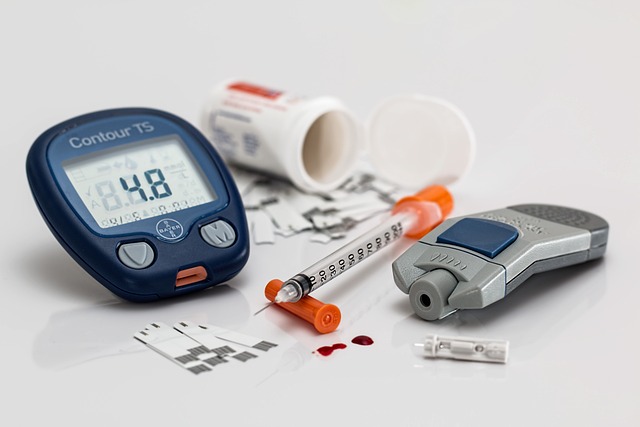Autoimmune diseases are a complex group of disorders that occur when the immune system, which is designed to protect the body from harmful invaders like viruses and bacteria, mistakenly attacks its own healthy tissues. This self-directed assault can lead to chronic inflammation, tissue damage, and a wide range of symptoms depending on the specific disease and the organs or systems affected. With over 80 recognized autoimmune conditions—including rheumatoid arthritis, lupus, multiple sclerosis, type 1 diabetes, and Hashimoto’s thyroiditis—these diseases collectively affect millions of people worldwide.
Despite their prevalence, autoimmune diseases remain poorly understood, with no definitive cures. However, gaining insight into what triggers these conditions and how they develop can help individuals manage symptoms, reduce flare-ups, and improve their quality of life. In this article, we’ll explore the mechanisms behind autoimmune diseases, common triggers, and strategies for prevention and management.
How Autoimmune Diseases Develop
The immune system is an intricate network of cells, tissues, and organs that work together to defend the body against infections and foreign substances. Normally, it distinguishes between “self” (the body’s own cells) and “non-self” (invaders like pathogens). In autoimmune diseases, this distinction breaks down, causing the immune system to produce autoantibodies that target healthy tissues as if they were threats.
While the exact cause of autoimmune diseases remains unclear, researchers believe that a combination of genetic predisposition and environmental factors plays a role in triggering the immune system’s malfunction. Here’s a closer look at these contributing factors:
1. Genetic Predisposition
Some people inherit genes that make them more susceptible to developing autoimmune diseases. For example, certain variants of the HLA (human leukocyte antigen) gene have been linked to conditions like rheumatoid arthritis and type 1 diabetes. However, having these genes doesn’t guarantee you’ll develop an autoimmune disorder—it simply increases your risk.
2. Dysregulation of the Immune System
A malfunctioning immune system may fail to properly regulate itself, leading to an overactive response. Factors such as chronic inflammation, imbalances in gut bacteria (dysbiosis), and defects in regulatory T-cells (which normally suppress inappropriate immune responses) can contribute to this dysregulation.
3. Environmental Triggers
External influences often act as catalysts for autoimmune diseases in genetically predisposed individuals. These triggers vary widely but include infections, toxins, stress, diet, and hormonal changes. We’ll delve deeper into these triggers later in the article.
Common Autoimmune Diseases
Autoimmune diseases manifest differently depending on the part of the body being attacked. Below are some examples of well-known autoimmune conditions and their effects:
- Rheumatoid Arthritis (RA): The immune system attacks the lining of joints, causing pain, swelling, and eventual joint deformity.
- Lupus (SLE): A systemic condition where the immune system targets multiple organs, including the skin, kidneys, and brain, leading to fatigue, rashes, and organ damage.
- Type 1 Diabetes: The immune system destroys insulin-producing beta cells in the pancreas, resulting in high blood sugar levels.
- Multiple Sclerosis (MS): The protective covering of nerve fibers (myelin) is damaged, disrupting communication between the brain and body.
- Hashimoto’s Thyroiditis: The immune system attacks the thyroid gland, impairing hormone production and leading to hypothyroidism.
- Celiac Disease: Gluten ingestion triggers an immune response that damages the small intestine, interfering with nutrient absorption.
Each of these diseases has unique symptoms and complications, but they share a common thread: an immune system gone awry.
Triggers of Autoimmune Diseases
While genetics lay the groundwork, environmental triggers often push the immune system over the edge. Understanding these triggers can help individuals minimize their exposure and potentially delay or prevent the onset of autoimmune diseases.
1. Infections
Certain viral and bacterial infections are known to trigger autoimmune responses. For instance:
- Epstein-Barr virus (EBV), responsible for mononucleosis, has been linked to lupus and MS.
- Streptococcal infections may trigger rheumatic fever, which can lead to autoimmune heart disease.
- Helicobacter pylori infections are associated with autoimmune gastritis.
2. Stress
Chronic physical or emotional stress can weaken the immune system and exacerbate inflammation. Elevated cortisol levels, a hallmark of prolonged stress, disrupt immune regulation and may increase susceptibility to autoimmune diseases.
3. Diet
Poor dietary habits can contribute to inflammation and gut dysfunction, both of which are implicated in autoimmune diseases. Key culprits include:
- Processed foods high in refined sugars, trans fats, and artificial additives.
- Gluten, which triggers celiac disease in sensitive individuals.
- Excessive alcohol consumption, which can irritate the gut lining and promote leaky gut syndrome.
4. Environmental Toxins
Exposure to pollutants, heavy metals (like mercury and lead), pesticides, and industrial chemicals has been linked to increased rates of autoimmune diseases. These toxins can disrupt immune function and provoke inflammatory responses.
5. Hormonal Changes
Many autoimmune diseases disproportionately affect women, suggesting a connection to hormonal fluctuations. Conditions like lupus and rheumatoid arthritis often worsen during pregnancy, postpartum periods, or menopause due to shifts in estrogen and progesterone levels.
6. Gut Health
The gut microbiome plays a crucial role in regulating immunity. Imbalances in gut bacteria, often caused by antibiotics, poor diet, or infections, can lead to increased intestinal permeability (“leaky gut”). This allows undigested food particles and toxins to enter the bloodstream, triggering an immune response.
Managing Autoimmune Diseases
Although there is currently no cure for autoimmune diseases, several strategies can help manage symptoms, reduce flare-ups, and improve overall health:
1. Medications
Depending on the condition, treatments may include anti-inflammatory drugs, immunosuppressants, biologics, or hormone replacement therapies. These medications aim to control inflammation and modulate the immune system.
2. Anti-Inflammatory Diet
Adopting an anti-inflammatory diet can help reduce symptoms and support overall well-being. Focus on:
- Whole, unprocessed foods like fruits, vegetables, nuts, seeds, and lean proteins.
- Omega-3-rich foods like salmon, walnuts, and flaxseeds.
- Avoiding pro-inflammatory foods like sugar, processed meats, and refined grains.
3. Stress Management
Techniques such as mindfulness meditation, yoga, deep breathing exercises, and adequate sleep can lower stress levels and improve immune regulation.
4. Regular Exercise
Moderate exercise helps reduce inflammation, boost mood, and enhance energy levels. Activities like walking, swimming, or tai chi are gentle yet effective options for those with autoimmune conditions.
5. Addressing Gut Health
Supporting a healthy gut microbiome through probiotics, prebiotics, and fermented foods can strengthen the immune system and mitigate inflammation. Additionally, identifying and eliminating food sensitivities (e.g., gluten or dairy) may provide relief for some individuals.
6. Reducing Environmental Exposures
Minimize contact with toxins by using natural cleaning products, filtering water, avoiding smoking, and choosing organic produce when possible.







